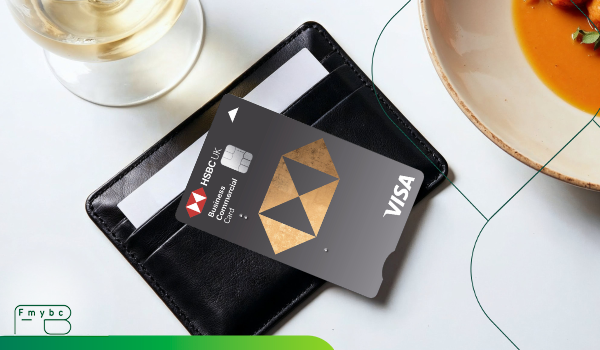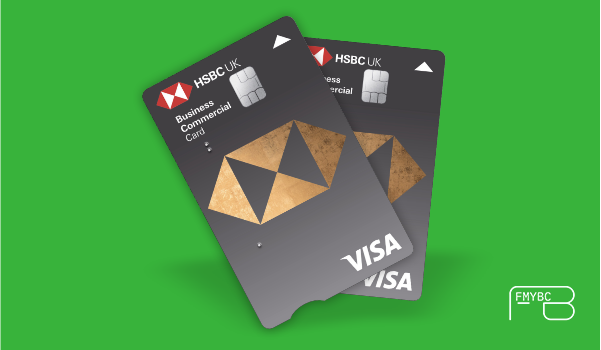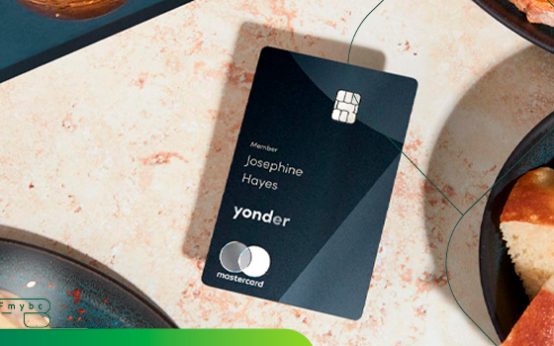
Whether you’ve already been approved or are still weighing your options, this guide breaks down everything serious UK businesses need to know about the HSBC Business Credit Card. From smart cash flow strategies to little-known features and fee-saving hacks, we go beyond the marketing to show how real SMEs are using this tool to stay agile and financially efficient.
Step-by-Step: How to Apply for the HSBC Commercial Card
Applying for the HSBC business credit card in the UK is straightforward, but understanding the approval logic can significantly increase your chances.
Eligibility Criteria:
- UK-based business (Sole trader, Ltd company, LLP).
- Minimum trading time: 12 months preferred.
- Must have a business current account with HSBC or apply for one concurrently.
- Directors must pass a soft credit check and ID verification.
Required Documentation:
- Company registration details (Companies House).
- Last 3–6 months of bank statements.
- VAT number (if applicable).
- Director’s proof of address (utility bill, council tax).
- Personal and business credit history review.
Insider tip: Businesses with <18 months of operation often get a £500–£2,000 starting limit. To unlock higher limits (>£10,000), show consistent revenue flow and low monthly liabilities.
Advanced Optimisation Tips for SMEs
Many UK businesses use the HSBC card purely for purchases. Here’s how to extract far more value:
1. Cash Flow Timing Hack
- Align your statement cycle close date with supplier invoicing dates. This gives you up to 56 days float at 0% interest.
- Example: If statement closes on the 28th, make purchases on the 29th to maximize interest-free period
2. Delegate Expense Control
- Issue supplementary cards to team leads or departments with individual spending caps via MiVision.
- Create automated alerts for categories like fuel, travel, subscriptions.
3. Maximize Foreign Transaction Value
- Use the card for pre-paid hotel and travel bookings, then convert to GBP using a multi-currency business account (e.g. Wise, Revolut Business) to offset the 2.99% foreign exchange fee.
4. Track Business Tax Deductions
- Tag all card transactions in real-time using accounting tools like Xero or QuickBooks. This saves hours in quarterly VAT returns and helps identify deductible costs.
5. Avoid Penalties
- Set direct debit minimum payments, even if partial. Late payment incurs a flat £12 charge + impacts credit score.
Frequently Asked Questions (FAQ)

1. Can I get the HSBC business credit card with bad credit?
Possibly. HSBC doesn’t publish strict cut-offs, but a poor director credit file or recent CCJs will almost always lead to rejection.
2. What’s the real APR I’ll pay?
Although 15.9% is advertised, actual APR depends on your business risk profile. Some SMEs get offered up to 22%.
3. Is there cashback or rewards?
No. HSBC removed points schemes in 2021 to focus on cost-effective business tools.
4. Can I pay HMRC taxes using the card?
Yes, but it will count as a cash advance (2.99% fee). Best practice: use current account and reserve card for working capital.
Hidden Features Most SMEs Miss
- MiVision integration with Xero: Allows semi-automatic reconciliation of monthly expenses.
- Department-level card issuance: Issue cards by branch or function to isolate budgets.
- Auto alerts for vendor subscriptions: Easily spot recurring charges for services you forgot about.
- Predefined MCC restrictions: Block specific merchant categories like gambling or gift cards.
Cost Breakdown: Is the HSBC Business Card Worth It?
| Cost Element | Amount | Notes |
| Annual Fee (Yr 1) | £0 | Free for main and extra cards |
| Annual Fee (Yr 2+) | £32/card/year | Charged on renewal |
| Purchase Interest Rate | 15.9% (variable) | If balance not paid in full |
| Cash Advance Fee | 2.99% (min £3) | Avoid unless urgent |
| Foreign Transaction Fee | 2.99% | Use multi-currency account workaround |
| Late Payment Fee | £12 | Set auto-pay to avoid this |
Verdict: Total cost is competitive compared to rivals like Amex Business Basic (£99/year) or Capital on Tap (up to 34.5% APR).
Alternatives Worth Considering (UK Market)
| Card Name | APR (Purchase) | Fee (1st Yr) | Key Feature |
| Capital on Tap | From 19.99% | £0 | Rewards + high limits |
| Amex Business Basic | 22.2% | £0 | Membership Rewards points |
| Tide Expense Card | N/A (prepaid) | £0 | Real-time control, no interest |
| Barclays Business Card | 16.9% | £0 | Strong fraud protection options |
Pro tip: Capital on Tap is ideal for rewards, while Tide offers better control — but neither matches HSBC’s interest-free window + Visa acceptance combo.
How to Maximize Your ROI With the HSBC Card
- Use it strictly for expenses that generate return (ads, inventory, travel).
- Avoid cash advances – they burn ROI instantly.
- Synchronize spend with invoice cycles to minimize real cash outlay.
- Track ROI per transaction category (ex: £800/month in SaaS = 0.5x revenue ROI? Cut it.)
- Always pay full balance to use the card as a free 30–56 day loan.
Is It the Right Card for Your Business?
If your SME values:
- Simplicity over flashy rewards
- Predictable interest terms
- Visa-backed global usage
- Low annual fees with no surprises
Then the HSBC Commercial Card is a serious contender. It’s not for tech startups chasing cashback points or for those making frequent overseas purchases. But for UK-based service businesses, consultants, or retail operations, it provides control, reliability, and low operational cost.



 118 118 Money Card: Full Usage Guide, Tips & Real Value <p style='font-size:14px;'>More Than Just Credit Repair: How 118 118 Money Card Fits Real UK Lifestyles</p>
118 118 Money Card: Full Usage Guide, Tips & Real Value <p style='font-size:14px;'>More Than Just Credit Repair: How 118 118 Money Card Fits Real UK Lifestyles</p>  YONDER CREDIT CARD: THE COMPLETE OPTIMIZATION GUIDE <p style='font-size:14px;'>Everything you need to extract maximum value from the UK's most experience-focused card</p>
YONDER CREDIT CARD: THE COMPLETE OPTIMIZATION GUIDE <p style='font-size:14px;'>Everything you need to extract maximum value from the UK's most experience-focused card</p>  How to Use the Amex Gold Card for Maximum Value in 2025 <p style='font-size:14px;'>Advanced Strategies to Maximise Amex Gold UK: Points, Perks & Lounge Access</p>
How to Use the Amex Gold Card for Maximum Value in 2025 <p style='font-size:14px;'>Advanced Strategies to Maximise Amex Gold UK: Points, Perks & Lounge Access</p>